The Inuit are a Native American people whose homelands are in the Canadian Arctic. A special exhibit at the Northwest Museum of Arts and Culture in Spokane, Washington, featured The Inuit Art of Povungnituk. Povungnituk is a village on the eastern shores of Hudson Bay in Arctic Quebec. This artwork provides some insights into the daily life of the Inuit people.
Perhaps the most iconic image of Inuit people is the snow igloo (igluvigaq). This winter dwelling usually housed two families. During the summer, a skin-covered tent was used.
Traditionally, the Inuit were a hunting and gathering people whose subsistence was based on hunting, fishing, and gathering wild plants. With regard to fishing, Barnard Saladin d’Anglure, in his chapter in the Handbook of North American Indians, writes:
“Individual fishing was done by women with hand lines, through holes in the ice for trout and char or crevices in the floe ice for cod.”
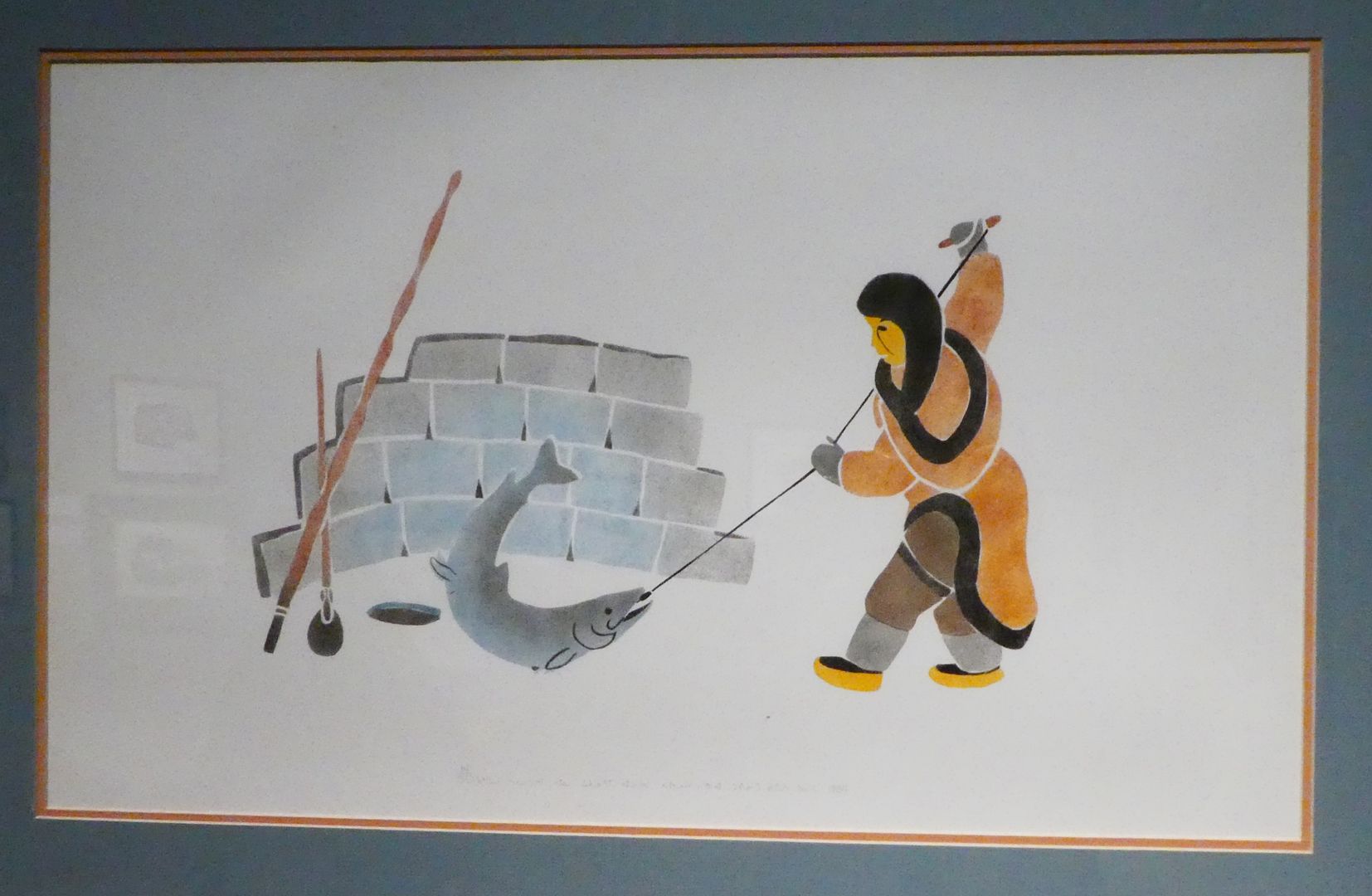 Shown above is Woman Catching an Arctic Char by Paulosie Sivuak (1930-1986) made in 1984 with stencil.
Shown above is Woman Catching an Arctic Char by Paulosie Sivuak (1930-1986) made in 1984 with stencil. 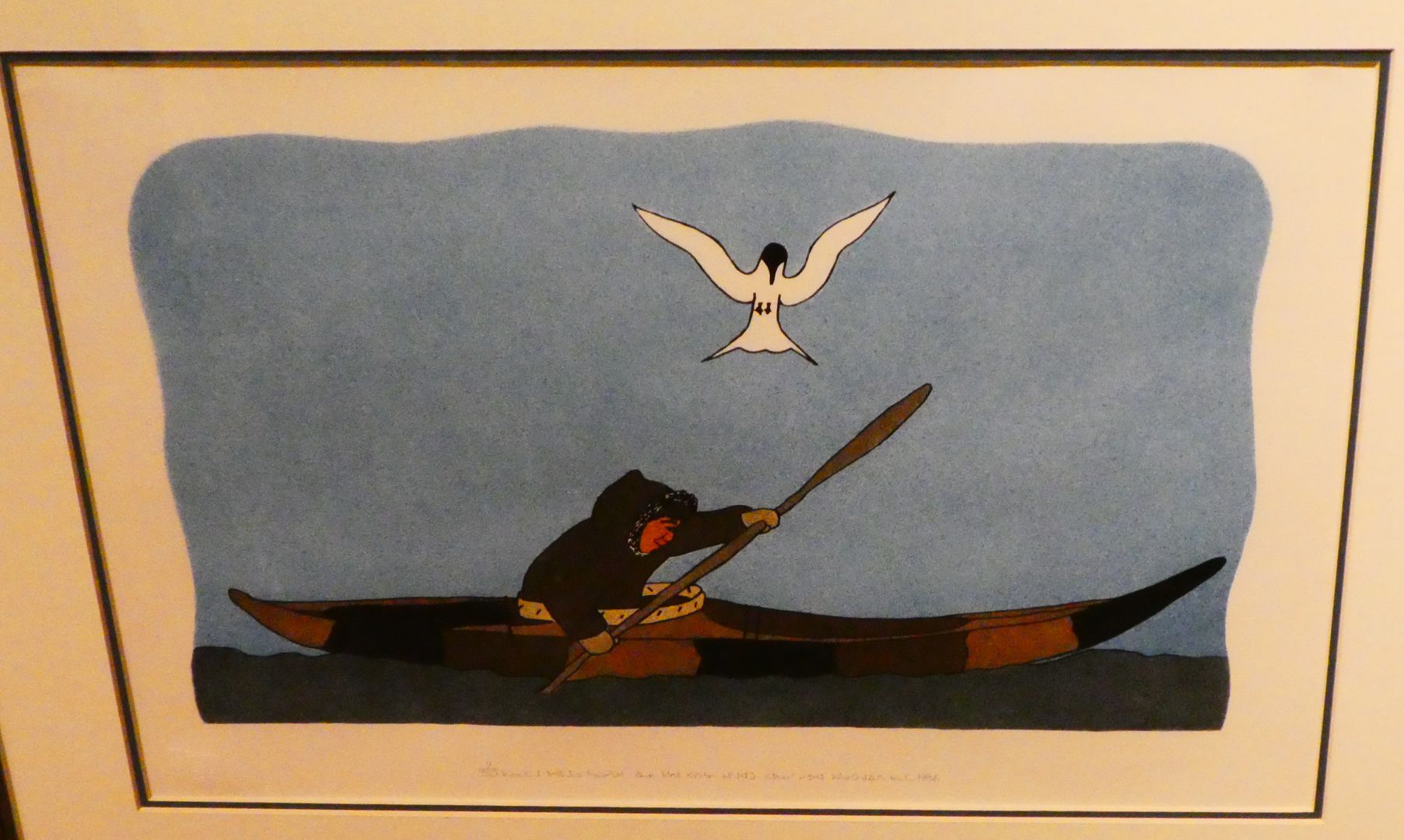 Shown above is Kayaker Traveling in from the Sea by Paulosie Sivuak (1930-1986) made in 1986 with serigraph and stencil.
Shown above is Kayaker Traveling in from the Sea by Paulosie Sivuak (1930-1986) made in 1986 with serigraph and stencil. 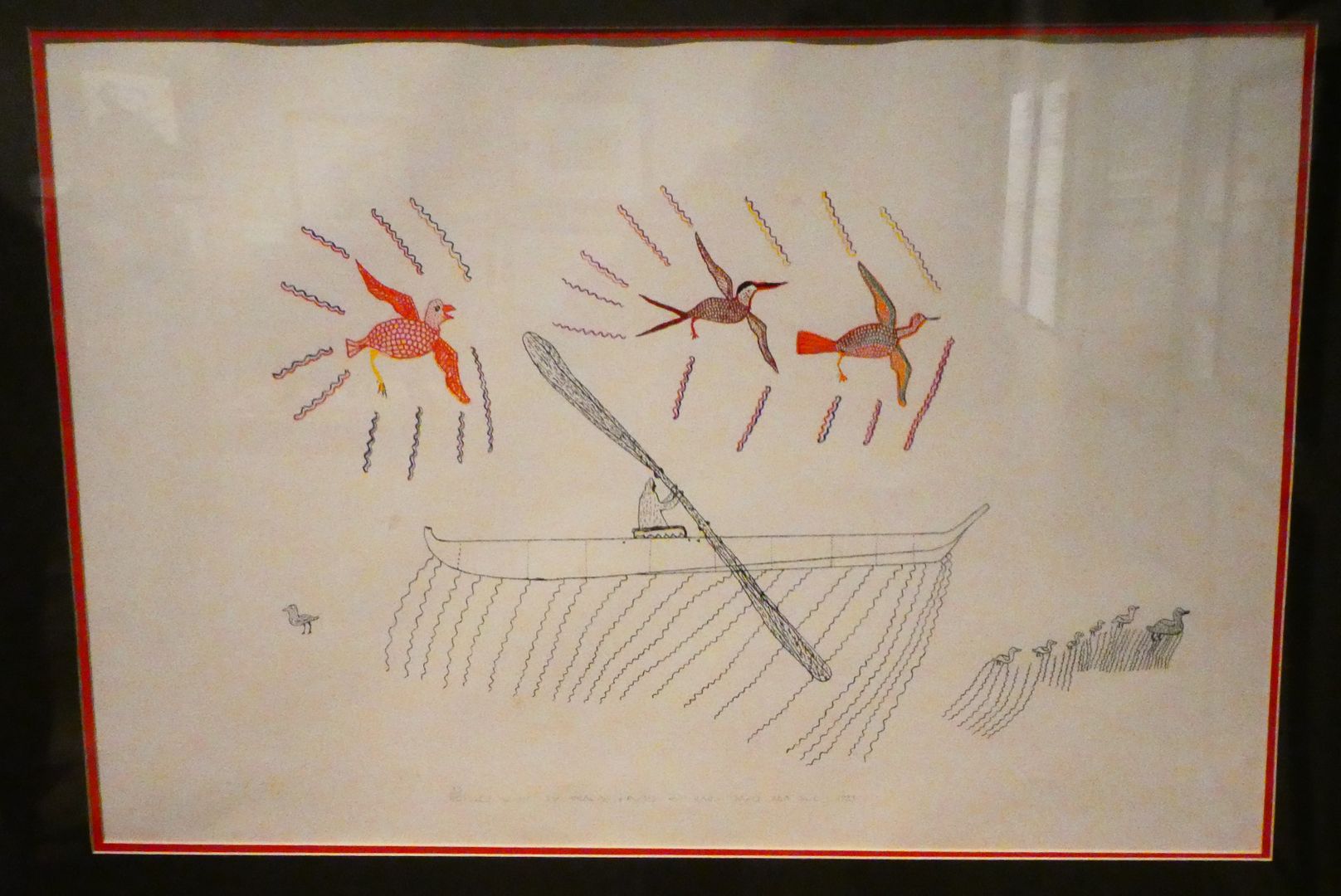 Shown above is Looking for Food in a Kayak by Josie P. Papialuk made in 1983 with serigraph.
Shown above is Looking for Food in a Kayak by Josie P. Papialuk made in 1983 with serigraph.
Thousands of years ago, the Inuit people living in the arctic developed a seaworthy craft which became known as the kayak. The kayak was simply a wooden frame covered with sealskin. There was a small hole to sit it and the tight fit between the user and the watercraft meant that it could be overturned and still float. The kayak, fast, light, seaworthy, was a hunting craft from which the hunter, armed with a deadly atlatl, could hunt seals and whales.
 Shown above is Family Making a Kayak by Leah Qumaluk, a stonecut made in 1984.
Shown above is Family Making a Kayak by Leah Qumaluk, a stonecut made in 1984. 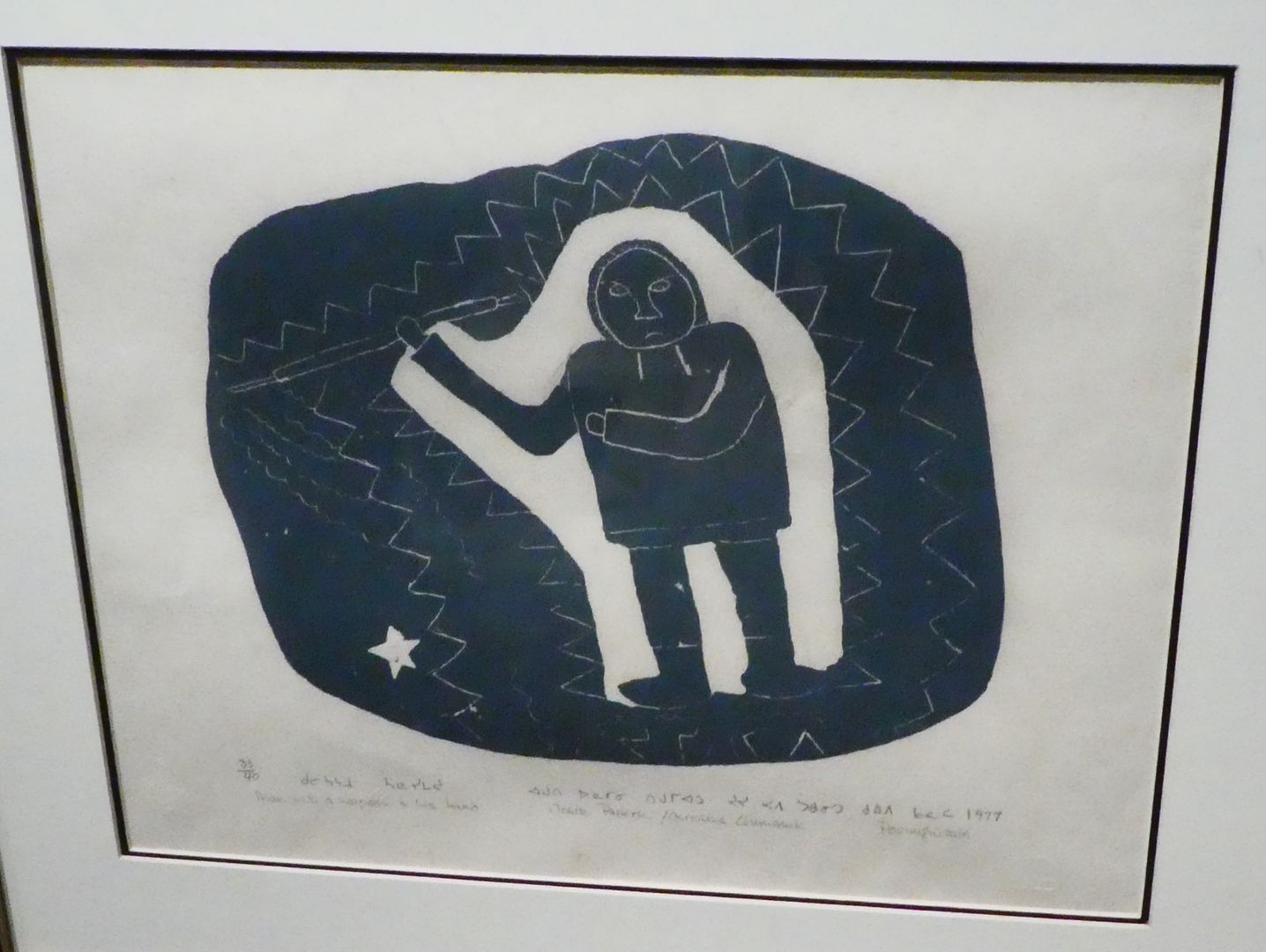 Shown above is Man with Harpoon in his Hand by Josie P. Papialuk made in 1977 with stonecut.
Shown above is Man with Harpoon in his Hand by Josie P. Papialuk made in 1977 with stonecut. 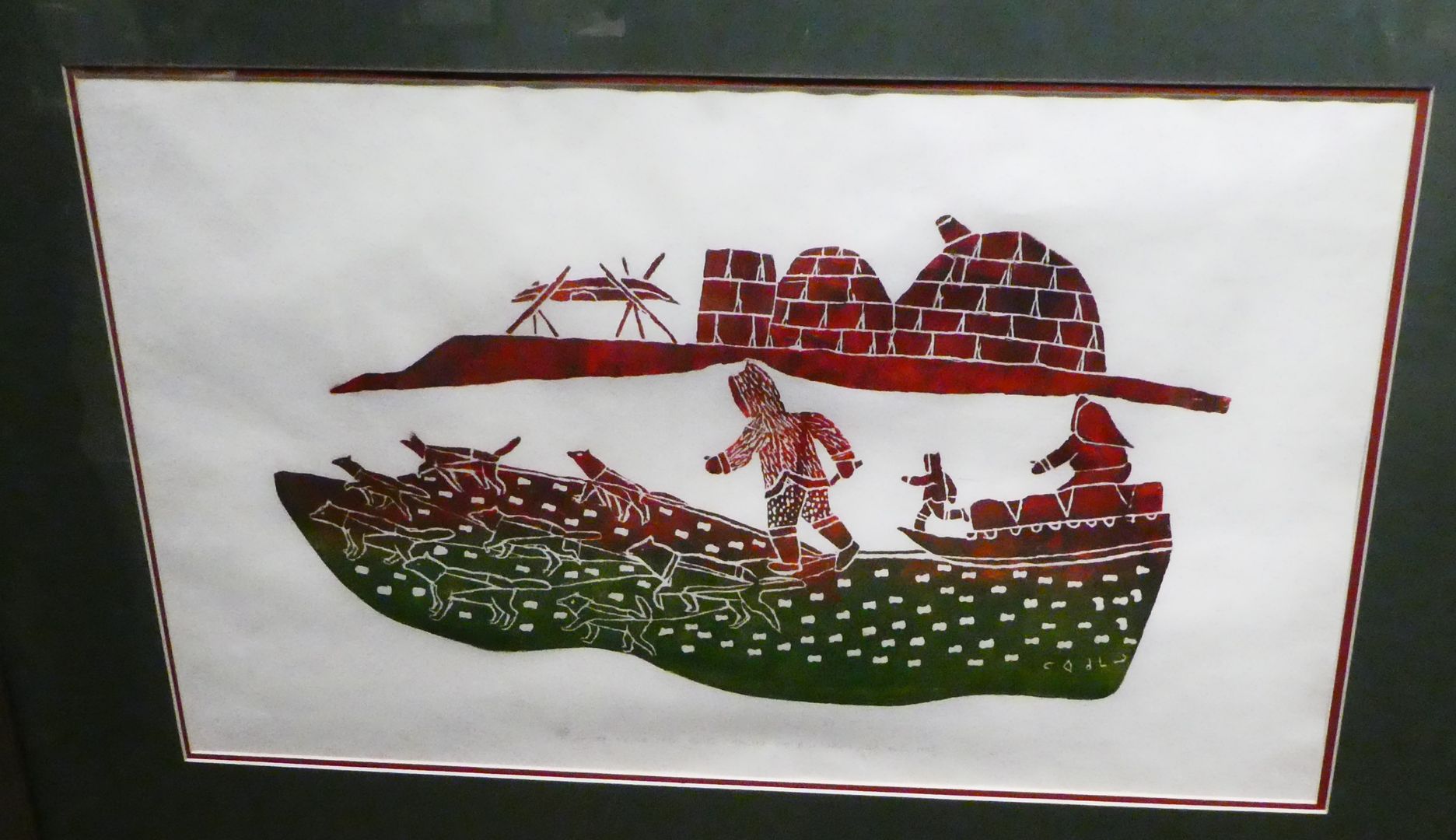 Shown above is Return of the Dog Team by Leah Qumaluk, a stonecut made in 1984.
Shown above is Return of the Dog Team by Leah Qumaluk, a stonecut made in 1984. 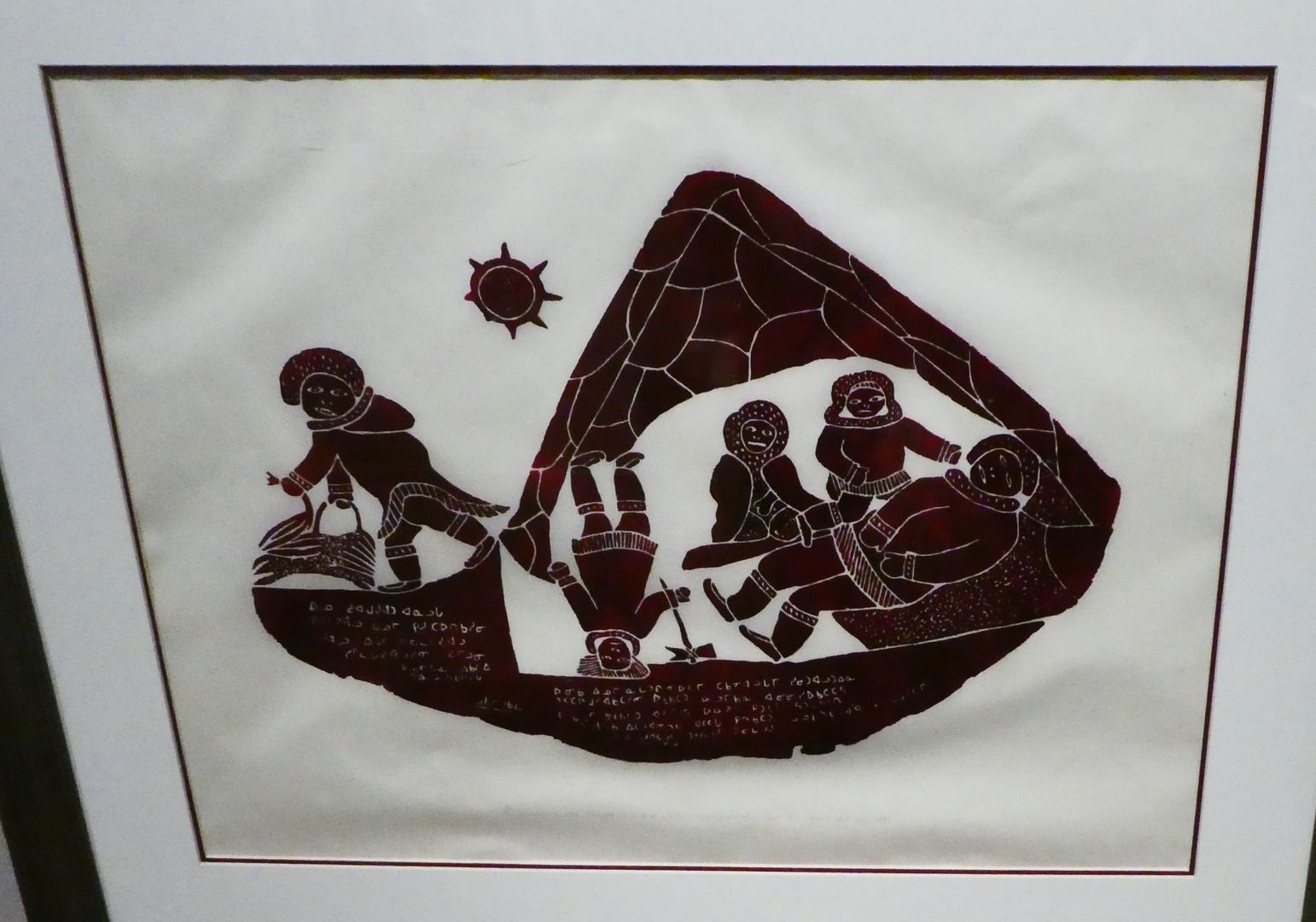 Shown above is The “Evil Spirit” Tired after Carrying the Man, Sleeps by Lukassie Tukalak and Caroline Quamluk, a stonecut made in 1987.
Shown above is The “Evil Spirit” Tired after Carrying the Man, Sleeps by Lukassie Tukalak and Caroline Quamluk, a stonecut made in 1987.  Shown above is Caribou Hunting Camp made by Lukassie Tukalak in 1987.
Shown above is Caribou Hunting Camp made by Lukassie Tukalak in 1987.
Caribou were an important source of both meat and hides for clothing. Bernard Saladin d’Anglure reports:
“It required, ideally, some 60 autumn caribou skins (of females or young ones) to renew the wardrobe of a band of 30 people.”
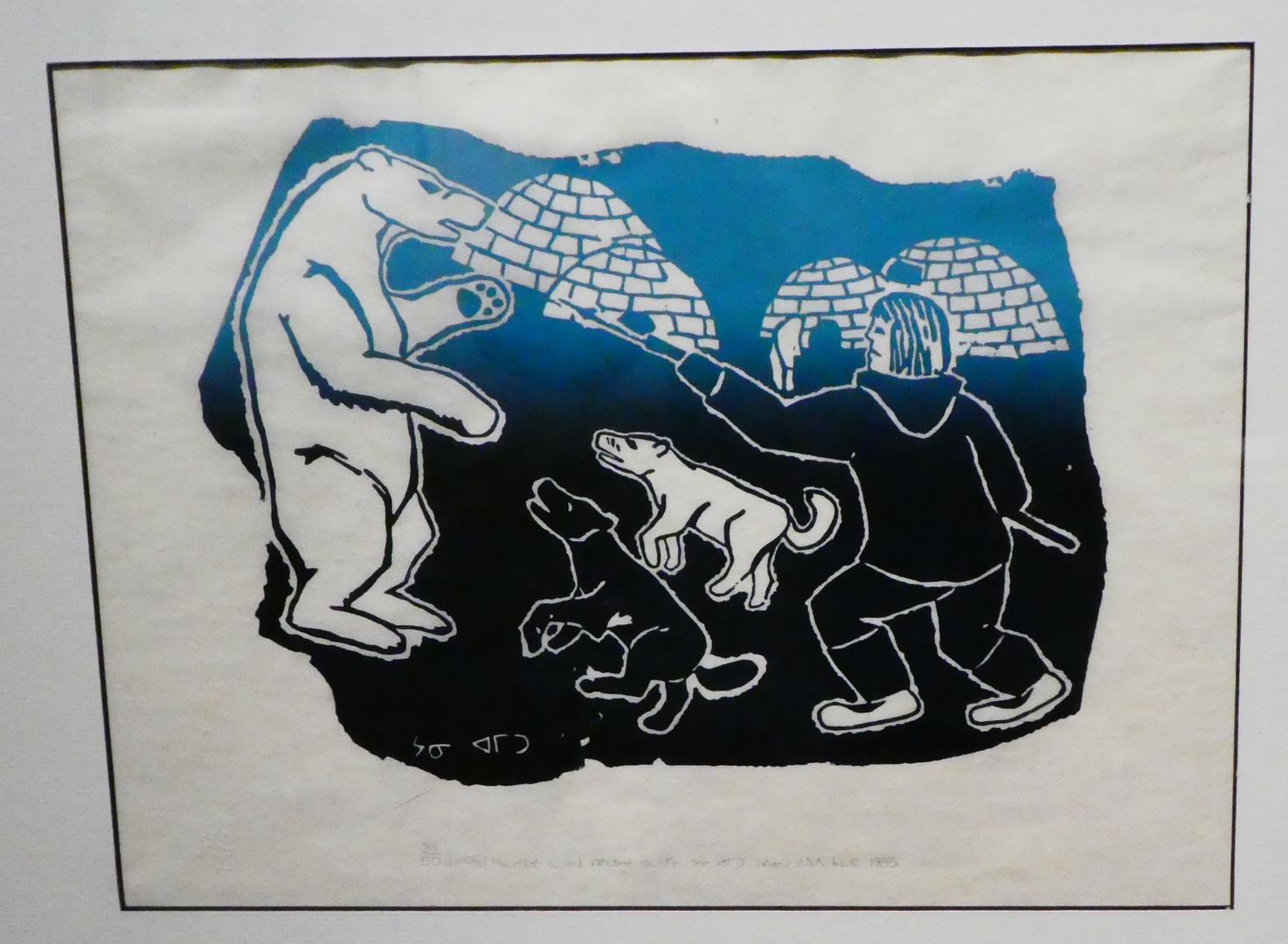 Shown above is A Polar Bear Visits the Settlement by Johnny Amituk, a stonecut made in 1986.
Shown above is A Polar Bear Visits the Settlement by Johnny Amituk, a stonecut made in 1986. 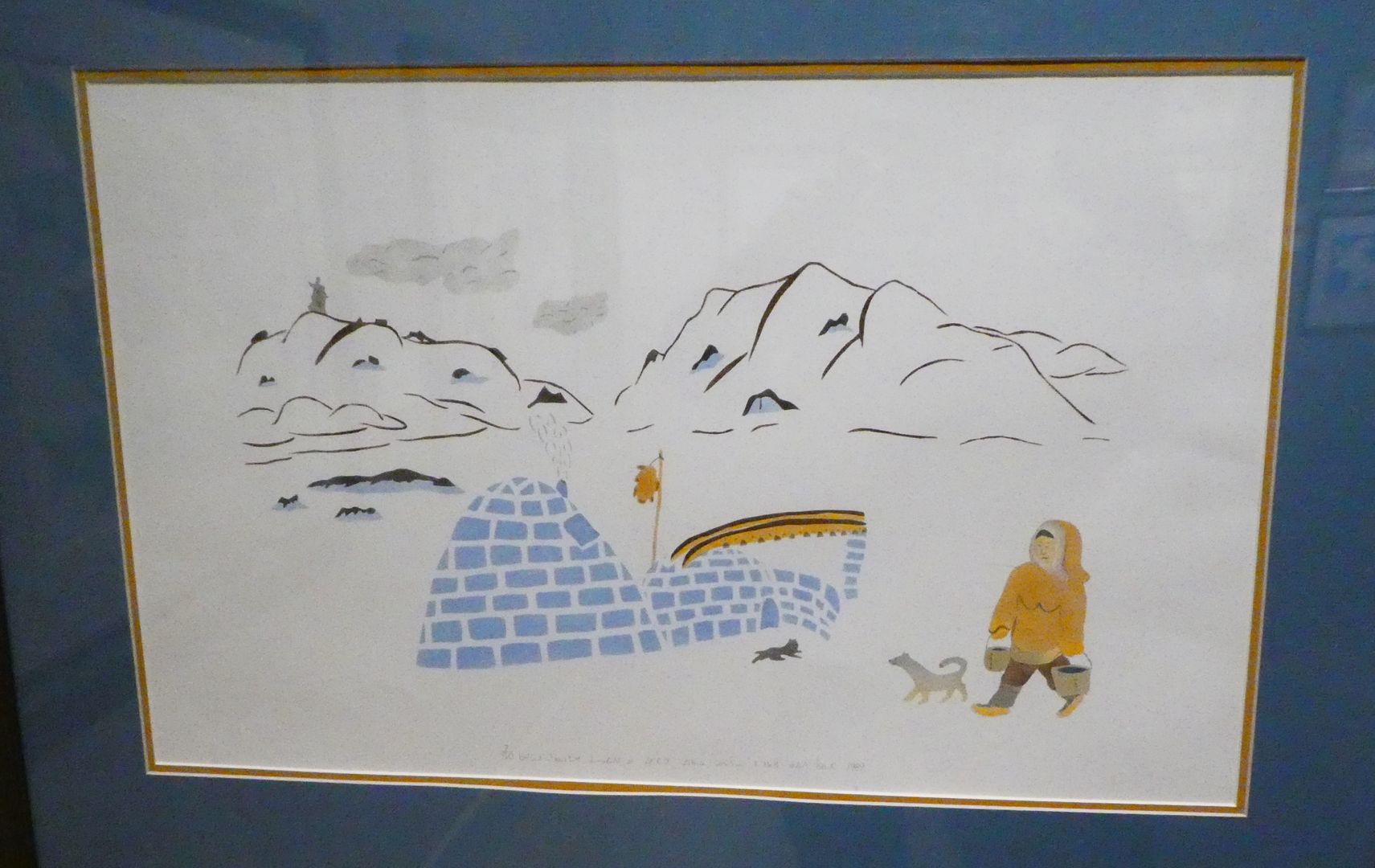 Shown above is Winter Camp Scene by Echalook Nutaraluk and Arkinsie Sivuarapik, a stencil made in 1989.
Shown above is Winter Camp Scene by Echalook Nutaraluk and Arkinsie Sivuarapik, a stencil made in 1989.  Shown above is A Bundle of Twigs to Make a Mattress by Paulosie Sivuak (1930-1986) made in 1986 with serigraph and stencil.
Shown above is A Bundle of Twigs to Make a Mattress by Paulosie Sivuak (1930-1986) made in 1986 with serigraph and stencil.
Inuit Dogs
Dogs are an important part of Inuit life and this is reflected in the art.
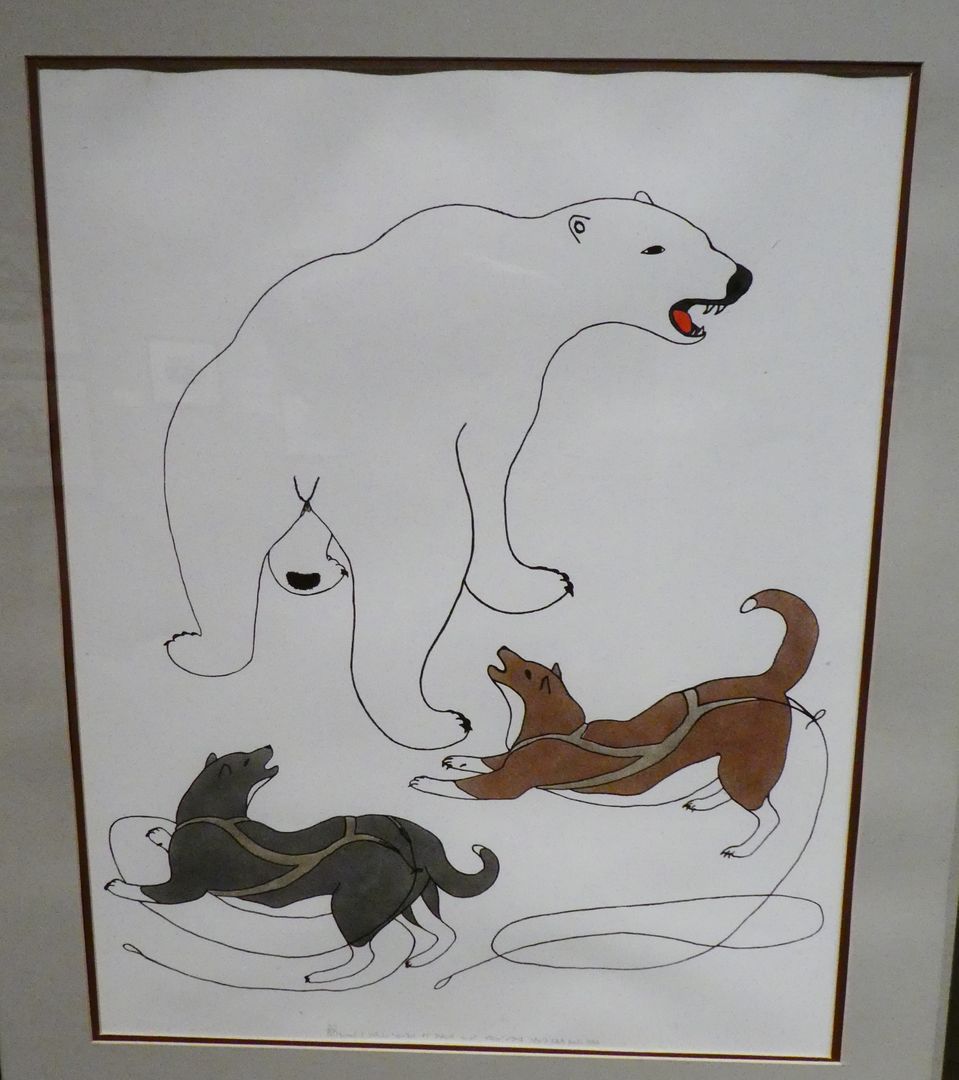 Shown above is Dogs Keep Polar Bear at Bay by Paulosie Sivuak (1930-1986) made in 1986 with serigraph and stencil.
Shown above is Dogs Keep Polar Bear at Bay by Paulosie Sivuak (1930-1986) made in 1986 with serigraph and stencil.  Shown above is Man with Dog Going to Visit Relatives by Paulosie Sivuak (1930-1986) made in 1987 with serigraph and stencil.
Shown above is Man with Dog Going to Visit Relatives by Paulosie Sivuak (1930-1986) made in 1987 with serigraph and stencil. 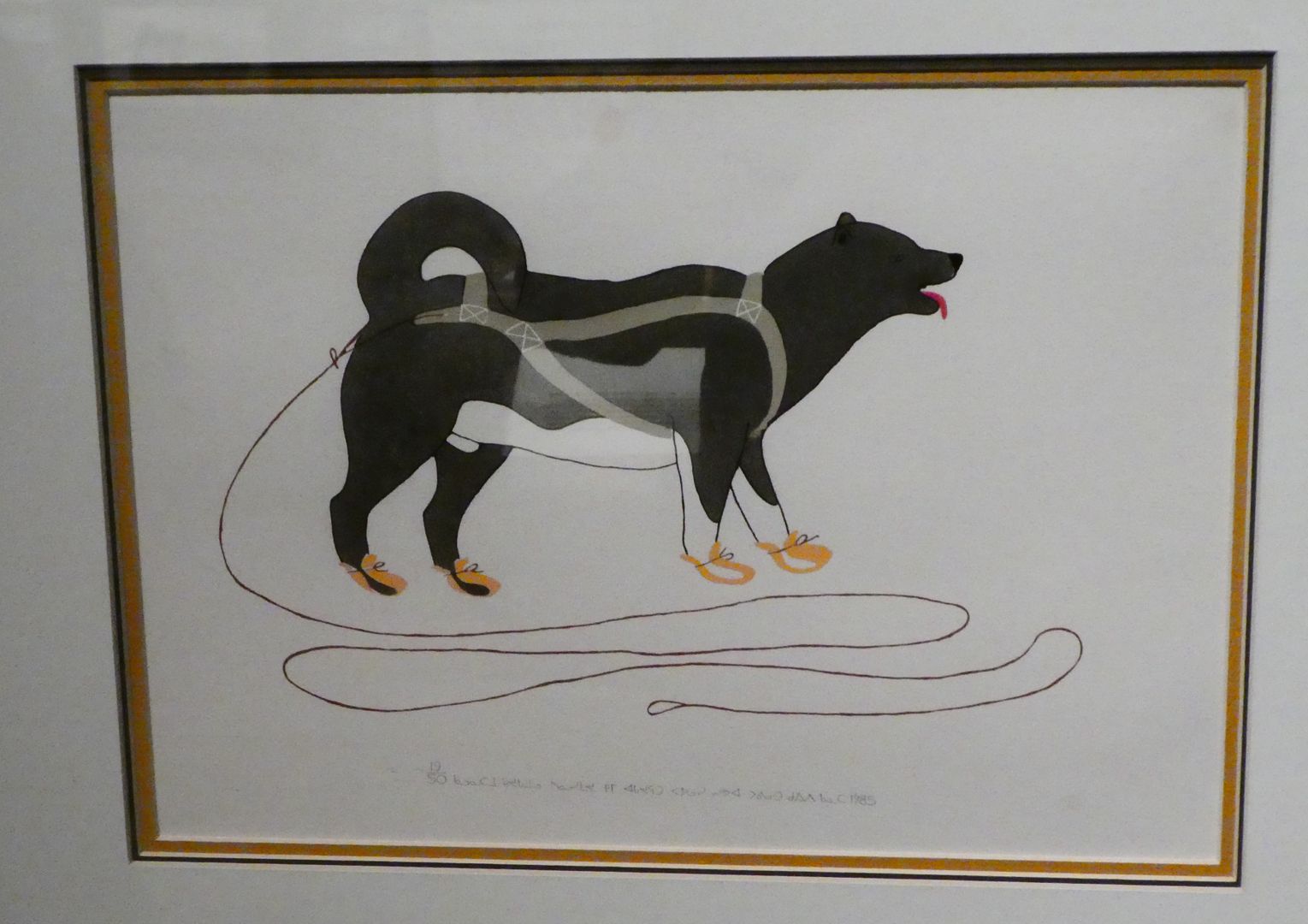 Shown above is Dog Sticking Tongue Out by Paulosie Sivuak (1930-1986) made in 1985 with serigraph and stencil.
Shown above is Dog Sticking Tongue Out by Paulosie Sivuak (1930-1986) made in 1985 with serigraph and stencil.
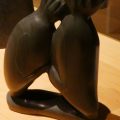
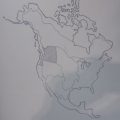
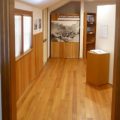
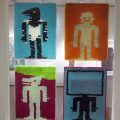
Leave a Reply